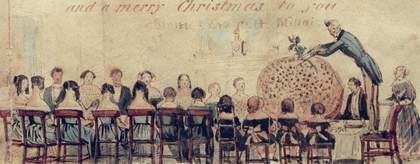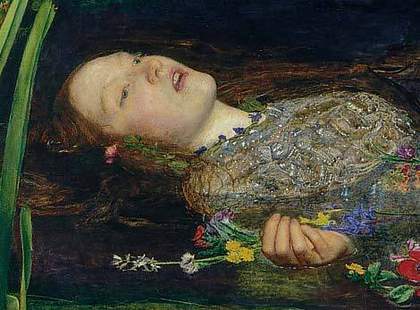“Once I met the painter Millais on the street, just after I had been lucky enough to see several of his paintings… not the least beautiful is an Autumn landscape, Chill October.” So wrote Vincent van Gogh to his brother.
I’d been looking at a small photocopy of Chill October 1870 for some days before I realised that the hill in the background was where I live. We are right on the Firth of Tay, under that hill, and the picture was therefore painted but a few miles upstream.
I drove upriver, picked up the M9, crossed the Tay by the Friarton Bridge, and on the north side was conducted almost at once to a brand new flyover which took me only to a dead-end between fields of long grasses. A track led towards the river, a sign said something about railways and pedestrian access only. With binoculars, notebook and the A4-sized copy of Chill October in my pocket, I left the car and walked.
Secluded in a garden of flowering shrubs was a tidy Victorian house. A Land Rover in its drive had a logo in old-fashioned script: Tay Salmon Fisheries Co. est 1899. There seemed to be no one around, though the whole place looked cared for and at peace with its surrounds; there were obviously people here who took an interest. Immediately behind a picket fence ran the Perth to Dundee railway, and beyond that was a deep, damp, reedy, willowy stretch of riverbank. It looked mysterious, and I could smell mud. I crossed the railway line, and though I could still hear the traffic roar of the A85, it was another world, a river place, cloaked in river silence.
Because of the estuarial tides, Millais had built a platform on which to paint Chill October. Daily, a railway porter helped him to carry the canvas on to the site. He’d said the trains buffeted him, and that a very high tide once carried his platform away. So I was looking for a spot with a view downriver, close to the railway, in a place subject to tides. It must be very close by. As if by magic, before me a boardwalk, on short stilts, wound away among the reeds and willows. Of course I followed it; it was magical, and strange to be walking at waist height to reeds and tree trunks. The ground beneath was damp, riven with little muddy creeks. By now I felt as if I were in a film, never mind a painting, because the boardwalk led to a platform on stilts and the platform was a little hexagonal structure with windows on all sides. I thought it was a bird hide, and on cue a heron took to the air; and I could hear curlew. The door was open, I went in, and took from my pocket the photocopy of Chill October.
Should it surprise us that landscapes don’t change? It was 137 years since Millais stood here. Of course they change, trees grow and fall, silt builds up, river and reed levels alter. Today it was flaming June, the land was at its greenest, the trees at their most full. It was low tide, but I was looking at Chill October all right.
I was a little uncomfortable at having entered someone else’s building, so I soon made my way back over the boardwalk and crossed the railway, just as a man was loading some timber into the Land Rover. “Find what you were looking for?” he asked, cheerfully, but I was a bit embarrassed and gabbled something about a painter called Millais and the Tate , and I thrust the photocopy at him and asked, did he happen to know this picture, this Chill October? Mr Clarke set down the timber, laughing. “Do I know this picture?” he said. “My dear, come into the house…”
David Clarke was born in that house; his family has owned the Tay salmon fishing company since it was founded. He led me into a room which commanded much the same view as I’d seen from the platform among the reeds, and there on the wall was a large copy of… Chill October. It was my turn to laugh. “Did you notice the logo on the Land Rover?” Mr Clarke asked. “Millais’s son designed that.”
We sat for an hour at the kitchen table, drinking coffee, the full June Chill October view at the window, talking about the river, its wildlife, its changes, ideas about landscape, responsibilities for its well-being, and how it might be 137 years hence, as the tide quietly slicked in, filling the muddy creaks, and the heron flew back to its place.


